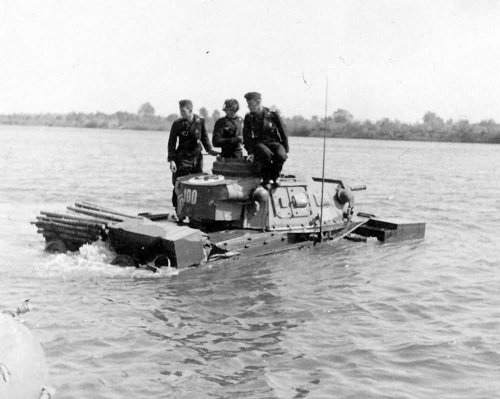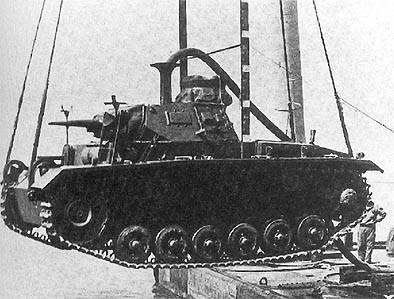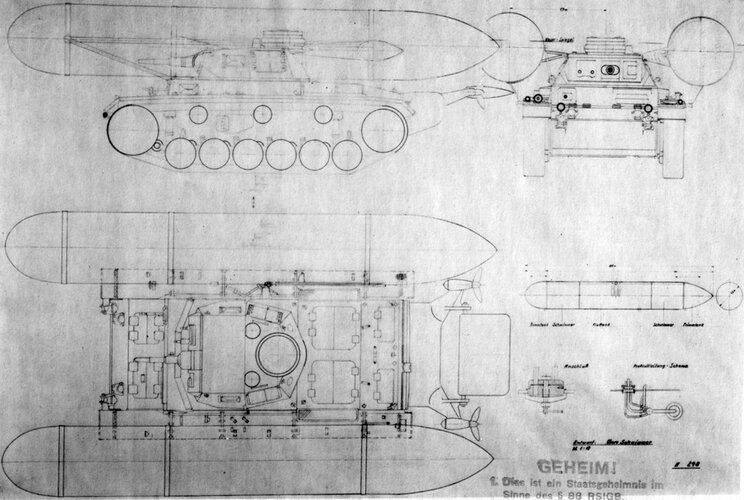Michael Sawodny states in his "Deutsch Panzer-Raritäten" some interesting designs. One of them is the submersible medium tank, "Unterwasser-Tauchfahrzeug" or "UT-Kampfwagen", intended to be part of the "Operation Sealion", the planned invasion of Britain. It was to cruise 2 to 6 meters below surface, with lateral floating(trimm) tanks.
Not to be confused with the well-known Tauchpanzers based on Pz. III and IV.
Is there someone who knows more on this?
Not to be confused with the well-known Tauchpanzers based on Pz. III and IV.
Is there someone who knows more on this?



